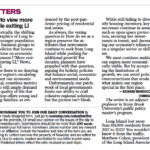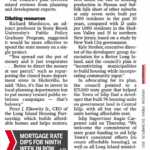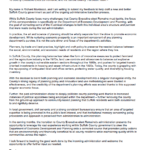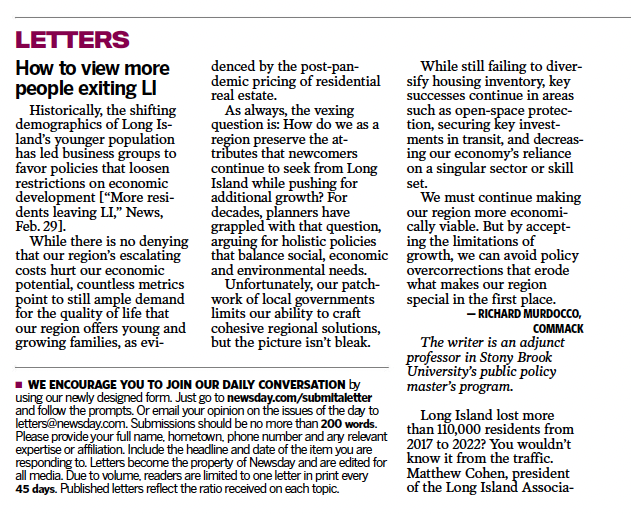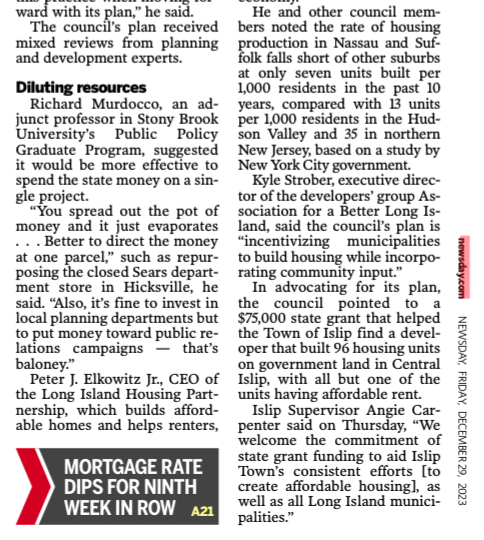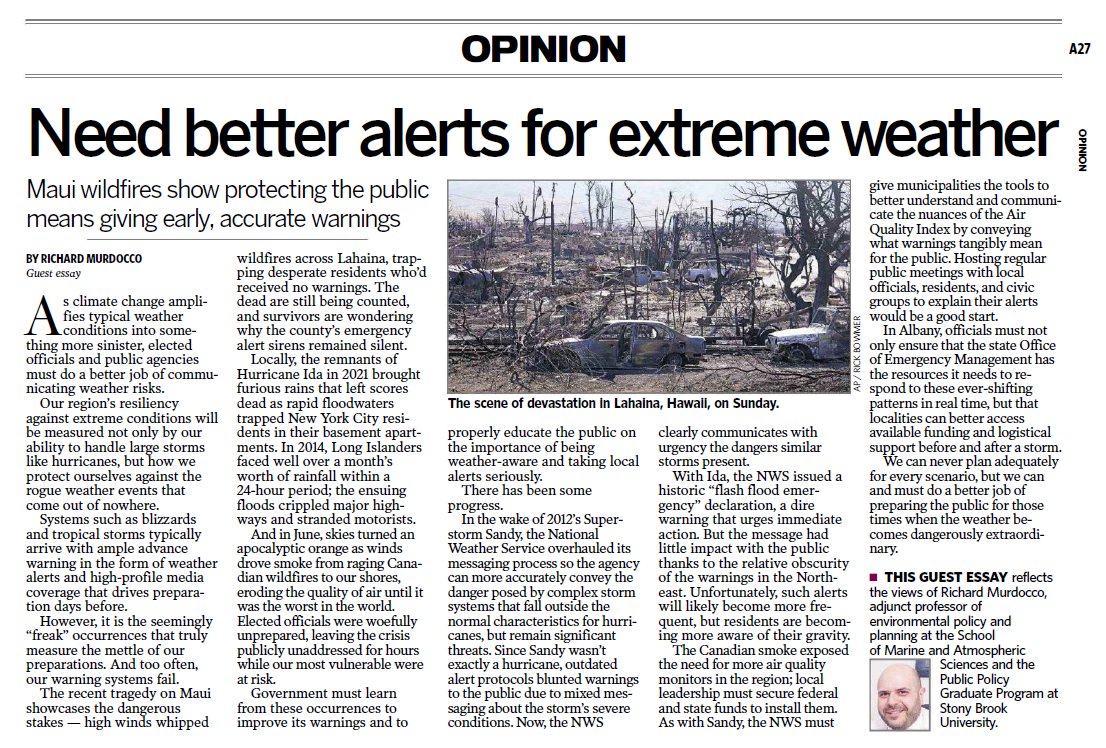Recently, Vision Long Island shared an interesting article from the Wall Street Journal on Long Island’s blossoming downtown redevelopment scene. In their post, the nonprofit commented that ”some of the regional commentary whether this trend is a good thing or not is academic. The market, community and small business people are the driving force. The best quote that sums it up from a local small businessman adjacent to his shop: ‘Having 200 new bodies living next door to me, it’s like Christmas.’”
As well it should be.
Urban Planning is grounded by standard practices, and conducted by professionals, who base their recommendations on valid data. Regionally, we’ve seen the opposite, with stakeholder whims and agendas at the forefront of the conversation regarding Long Island’s needs. It is important to question the process, especially when the region’s infrastructure is so woefully out of date in accommodating our current burden, let alone the countless new burdens being proposed across Nassau and Suffolk counties. It’s the same old solutions being proposed by the same group of people. Downtown! Brain Drain! Enough already – it’s getting tiresome.
What hubris drives the notion that downtown redevelopment is the only way to pack in much-needed diversification of our regional housing options? Why not further explore Transfer-of-Development Rights and clustering to help balance increasing density and preserving open space simultaneously? Why not explore adapting our suburban model and land-use patterns instead of trying to shoehorn urban solutions in areas where the demand isn’t exactly electrifying.
Villages such as Rockville Centre and Patchogue are successful because the demand is there. Other areas on Long Island either face the challenge of being too far from economic centers or substantive employment options, or extreme limits in their infrastructure. Smart Growth is a valid planning concept that works, but only if all of the pieces are in sync. If one aspect of the concept is missing, it’s not smart growth, but just another development in a larger trend of higher density, suburban sprawl. We need to assess our regional needs, adapt our solutions to those needs and balance our approaches to growth.
Is this “regional commentary” academic? You bet.
It wouldn’t be sound planning any other way.



